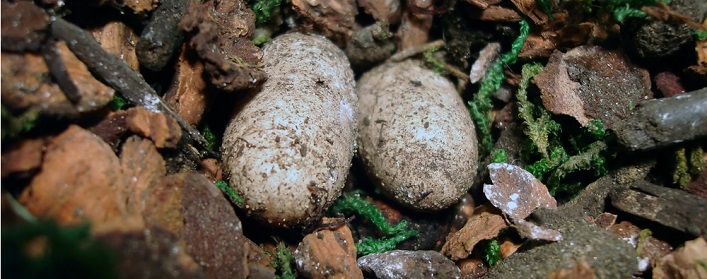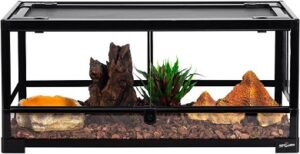Few lizards make better pets than leopard geckos (Eublepharis macularius). They are small, but not so diminutive that they present husbandry challenges. They are typically docile and easy to handle, and they are straightforward to house.
Leopard geckos are hardy lizards, capable of tolerating many of the mistakes beginning keepers might make. They are also available in a myriad of color and pattern variations.
These traits also make leopard geckos ideal for captive breeding programs. They are generally very easy to breed, making them an excellent subject for keepers interested in breeding lizards.
Determining the Sex of Your Leopard Geckos
To start breeding leopard geckos, you need at least one mixed-sex pair. This means you’ll need to learn how to determine the sex of your lizards.

There are two primary criteria for distinguishing males from females:
- Hemipenal Bulges: Males have twin bulges at the base of their tails, caused by the lizard’s hemipenes, which are stored in the tail when not in use. Females lack these bulges.
- Pre-anal Pores: Males have a V-shaped row of prominent pores between their legs, often with waxy secretions. These pores are faint or absent in females.
To examine these features, gently flip your lizard upside down or place it in a clear-bottomed container and lift the container overhead.
Pre-Breeding Conditioning
Once you have a matched pair, the first step is to ensure they are in optimal health and physical condition. Breeding can be taxing, especially for the female, who will endure physical trauma and the demands of egg deposition.
Feed your lizards heavily for one to three months before breeding. They should have full, plump tails but should not become overweight. Ensure the female receives adequate supplemental calcium during this period. Have a veterinarian examine your lizards for illnesses or parasites before starting the breeding process.
Cycling
Cycling is a process that synchronizes and primes your lizards for breeding. This involves creating an artificial “winter” or “dry season” for one to two months, followed by a “spring” or “summer” period with normal temperatures, day lengths, and humidity levels.
- Initial Preparation: Stop feeding for about a week to allow them to empty their digestive tracts.
- Temperature Drop: Lower their habitat temperature to the low 70s Fahrenheit.
- Daylight Reduction: Reduce the amount of daylight, but continue to provide water.
After the cycling period, gradually restore normal conditions and resume feeding heavily.
Not all breeders use a cycling period; some maintain constant temperatures year-round with good results. Choose the approach that works best for you.
Pairing
After cycling and a period of normal conditions, you can begin pairing your lizards for mating. Approaches vary:
- Brief Pairing: Pair lizards for several hours to a full day, then separate them for a day or two. Repeat throughout the breeding season.
- Constant Pairing: Some breeders leave lizards together for the entire breeding season or year-round. This can cause stress or fights, so it’s generally not recommended.
Egg Deposition

Add an egg deposition container to the female’s habitat about a week after initial pairings. The female will deposit two large eggs in the container, usually burying them before exiting to drink and rest. She will produce a new clutch every two to three weeks during the breeding season.
Monitor the female closely, ensuring she has water, calcium supplement powder, and ample food to replenish her fat stores.
Egg Incubation
Retrieve the eggs and transfer them to an incubator. Prepare an incubation container with damp vermiculite and mark the tops of the eggs with a pencil to maintain orientation. Set the incubator to the desired temperature:
- 80-84°F: Typically produce female geckos.
- 88-90°F: Typically produce male geckos.
- 87°F: Generally produces a mix of both sexes.
Monitor the eggs during the incubation period, which lasts one to three months depending on the temperature.
Neonatal Husbandry
When the eggs hatch, set up a “nursery” habitat for the hatchlings with a paper towel substrate, a shallow water dish, and a few hiding spots. Maintain the enclosure at around 80°F with slightly higher humidity than adult habitats.
Hatchlings generally do not eat until their first shed, about a week after hatching. After this, move them to individual enclosures with standard temperatures and humidity levels and begin feeding them small crickets.
Conclusion
Leopard geckos are excellent pets and an ideal choice for breeding projects. By following these steps and ensuring the health and well-being of your lizards, you can successfully breed and raise healthy leopard gecko hatchlings.



